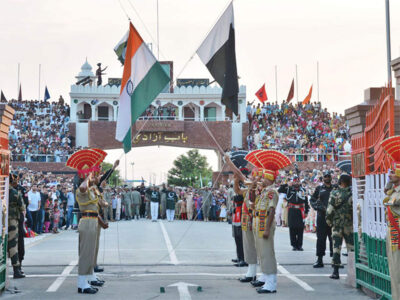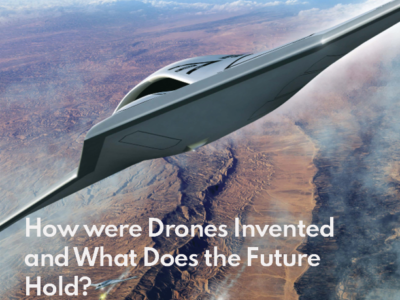Introduction
Understanding Pakistan-US relations is important not because of how both states share numerous intersections in their history but also how it has shaped regional and global power polarity. American national security, primarily based on its expertise in subcontracting its national interests, is intended to design alliances on its specifications. Tradeoffs aside, American national security tends to rearrange internal and external security architectures of states that acquiesce to project American national security in exchange for enhanced cooperative profits disbursed by America. The Cold War environment saw America delegating a significant portion of its national security either under collective defense programs or through extended deterrence, or even by creating substitute security complexes in regions where it lacked direct geographical advantage or territorial proximity.
Pakistan, recognized as a frontline state in South Asia, was a significant regional partner against Soviet interests within and beyond Asia. From being a partner in Eisenhower’s Atoms for Peace and SEATO to being a central participant in how the Soviet-Afghan War turned on its axis, Pakistan was crucial to American national security. Beyond 9/11, however, Pakistan-US strategic enterprise started displaying fractures and reservations by both sides and a drift in their intractability became apparently visible. ‘Pak-Americana: Ushering in a New Era for Pakistan-US Relations’ authored by Syed Mohammad Ali, Muhammad Asad Rafi, and Mosharraf Zaidi, and published by Tabadlab, is an attempt to dissect basis and grounds for such dissent between both states, and also an appraisal of how maintaining synchronization is still imperative for America and Pakistan. The report provides a comprehensive deconstruction of motives that are imperatively operable to necessitate continuation of a working relation between both states and also precursors for an enhanced partnership in the future. The report was reviewed by Dr. Muhammad Sharreh Qazi.
Pak-Americana identifies idiosyncrasies of Pakistan-U.S. relations and how they need to evolve beyond their conventional footprint of military-only interactions.
Overview of Pak-Americana
Pak-Americana explores ground realities and compulsions in Pakistan-US relations in detail, outlining the fundamental point of convergence between both states: America’s need for extended security in South Asia and Pakistan’s want of augmenting its security matrix against regional intimidations. It highlights how security and military necessity was and dominantly remained the significant consideration through periods of increased interactions between both states. It also highlights how both states were able to benefit from such an enterprise jointly and severally through the Cold War and partly in the post-Cold War environment. The report identifies geostrategic compulsions of both Pakistan and America in maintaining synchronization, but beyond geostrategy; it sees this bilateral relationship as frail and fleeting. It also appreciates a change in perceptions between Pakistan and America after the former’s alignment towards China and its participation in the latter’s One-Belt One-Road (OBOR) project through the China-Pakistan Economic Corridor (CPEC). For this report, Pakistan offers CPEC as a junction for East-West connectivity via economic liaison while for America, it is a competitive advantage acquired by China against its regional and global interests.
Another crucial point of interest identified by this report is compression of the Afghan war on American interests and financial consistency. It identifies the attrition-friendly environment post-9/11 and how American interests in Afghanistan and beyond have been marred due to protracted engagement. For Pak-Americana, Pakistan can step in as a facilitator in assisting American withdrawal without significant fallouts on its national interests. The report identifies the following seven avenues for restructuring Pakistan-US bilateral relations to modify the status quo:
- Enhanced economic interdependence and connectivity (Geoeconomics)
- Cultural and Social Rapprochement (Human Security)
- Assisted rehabilitation of Afghanistan (Partnership)
- Joint Counterterrorism (Global Counterterrorism)
- Facilitation of connectivity and integration between US and China (Great Power Collaboration)
- Reduction in regional polarization (Indo-US strategic alignment)
- Environmental diplomacy (Disaster and Climate Change Mitigation Strategies)
The report carefully appraises a Pakistan-centric view of all the above listed possibilities, highlighting crucial factors that can offer cooperation and status quo challenges that can create or accelerate apprehensions among both states. Though it does not provide a preference or priority hierarchy of listed avenues, it assumes that such opportunities are crucially imperative for a short-term to long-term restructuring of bilateral engagement. The report also provides contemporary data and facts to support its possibility of creating cooperation beyond geostrategic necessities and also provides instances necessary for assisting such a transition. Each opportunity (listed above) is appraised separately and discusses a standalone cause-and-effect understanding it can have on Pakistan-US mutual requirements. Since the report clearly indicates itself to be Pakistan-centric and prospectively expects an American rejoinder, its view of keeping Pakistan as a recipient state is not an absolute assumption. In its plans for rehabilitation of Afghanistan, global counterterrorism, great power collaboration, and disaster management/climate change mitigation, the report comprehensively highlights deficiencies in American strategy and its impact on the incumbent government.
Pak-Americana concludes by appreciating the deteriorating effects of having a transactional relationship between both states. It connects such deterioration to growing apprehensions allowing both states to shift to new strategic partners for pursuing the same objectives. The report also indicates that such transitions have not only weakened their ability to accomplish their objectives but has also created a new dimension of threats and vulnerabilities, making their job more difficult. The report reiterates the complexity of having/maintaining composite national security objectives constructed around tangible national interests and challenges thereof. The report suggests that Pakistan and America need to look beyond their security and military dependencies not because such requirements are gradually reducing but because such a relationship increases trepidations and chances of vacillation due to ever-changing regional and global milieus. It asks for a more non-traditional approach to suit their needs in contemporary transitions to national security and national interest. For America and Pakistan both, the report suggests a more socioeconomic connectivity as a means to comprehensively deal with emerging challenges of economic polarization through competitive pursuits, social connectivity for human development which will have a direct effect on how both states are able to mitigate environmental issues, challenges of rehabilitating Afghanistan without a fallout, and a comprehensive global counterterrorism policy aiming to connect states and their national security challenges. It also suggests that without Pakistan and America aiming to mutually-settle their differences, completing their desired objectives would be difficult and risk-prone.
Review of Pak-Americana
- International engagements between states even beyond security and military needs are almost always transactional. Either party to the arrangement is required and necessitated to facilitate the other in terms of fulfilling some margins of national security or interests indicated as being the source of such an engagement. Even in strategic partnerships and cooperative economic interaction there is a distinct undertone of a bilaterally applicable transaction. List of alternative fields of interaction highlighted in Pak-Americana are also transactional principally because of their inherent requirements by each state in order to complete the objectives detailed therein. The report highlights an array of possibilities where Pakistan and America can interact beyond security and all such needs are also transactional. They require both Pakistan and America to create liminal space for each other as a consequence of each other’s actions and offers which is a fundamental understanding of something being termed ‘transactional’.
- Pakistan and America have known each other primarily due to their security needs and military necessity. America needed a reliable and functional military/security partner in South Asia against Soviet interests and Pakistan required a strong military ally to compensate for its security vulnerabilities. In such a relationship, tangible national interests have played a functionally viable role in how they both pursued their strategies and alliance. Pak-Americana highlights the need for Pakistan to drift away from its geostrategic position as a prime proposal for a renewed partnership, but for rehabilitation of Afghanistan, counterterrorism, and great power collaboration, it suggests Pakistan to capitalize on its geostrategic position as a negotiator and interlocutor. For Pakistan to facilitate a compromise between America and China, with or without CPEC, it would have to offer its geostrategic position as a major incentive to both states which reiterates Pakistan’s importance primarily as a geostrategic compulsion.
- The report requires assessment and reassessment of contemporary policies in Pakistan’s diplomatic posture towards America and China by balancing how it strikes an alliance without disturbing the status If Pakistan offers an extensive economic and financial alliance to America and America ,in turn, requires steps that can interrupt its CPEC trajectory, it runs the risk of aggravating the relationship with China. On a similar notion, America’s maintenance of a trilateral strategic interaction (America, India and Pakistan) would not only create vulnerabilities for China , but also surely bring India and Pakistan to a more escalated circumstance. America’s third-party intervention between Pakistan and India was dominantly perceived to be India-centric because it ostensibly dubbed Pakistan responsible for escalation while being sympathetic to India’s positions across crises. Even during the more recent alteration to disputed territories by India, American insistence on remaining distant from such conflict was a source of enhancement of Pakistan’s strategic partnership with China . The objective that a transactional relationship is not required and should distance itself from geostrategic compulsions is plausible but idealistic. Asking for a non-transactional enterprise requires a deeper appreciation of such an architecture which is a suggested discourse for Pak-Americana.
- Pak-Americana has rightly pointed out a major fracture in Pakistan’s approach towards America; lack of diaspora connectivity. Where it seeks a comprehensive connectivity with American academic and social institutions, it rightly highlights the need for Pakistan to approach its diaspora residing in America to facilitate such an arrangement. American interest groups and policy institutes play a vital role in how America determines its approach towards international audiences for strategic connectivity and ‘Howdy Modi!’ was one such display where the then American president sought a more social connectivity with India through the Indian-American population. Through cultural and educational enterprises, both states can deviate from their traditional mode of engagement and seek for a more continued and consistent rehabilitation of strategic association. The report does initiate an identification mechanism from Pakistan but does not comprehensively suggest its terms of operationalization as to both modes and mediums of such identification exercise.
- A significant issue between Pakistan and America is how the former is viewed as a terrorist-friendly state by the latter. Even if it is a sentiment motivated by adversaries, punitive action in the form of pressures in the Financial Action Task Force and cessation of aid and assistance programs does indicate American inclination to maintain the Bush Jr. administration’s narrative of considering Pakistan “a safe haven for terrorists”. The report does mention a full section on counterterrorism but it does so from Afghanistan and ISIS lenses. For America, Pakistan has remained an equal contention and it has been shown by its actions even during FATF. This continues to exacerbate when America alleges Pakistan’s position on Uyghur Muslims in China to be aggressor-friendly and role in Afghanistan as questionable. Even after facilitating America through its Taliban negotiations for rehabilitation of Afghanistan, Afghan and American sentiment sees Pakistan in a vulnerable position when it comes to counterterrorism. More recently, American view of the Daniel Pearl case and remarks by the newly appointed Biden Administration indicates sufficiently where America plans to connect its trajectory for counterterrorism and how it would look at Pakistan. Pakistan, too, would have to show compliance which is both detrimental to how the report aspires connectivity between both states and an overall aspiration to resume strategic partnership on an equitable keel.
- Pakistan is not a stranger to bipolar competition between superpowers and has remained an active partner and affected party during the Cold The fallout of American-Soviet competition had and continues to have deep-rooted impacts on Pakistan’s economic, security, social and strategic position in South Asia. Pak-Americana suggests that Pakistan can not only act as an interlocutor to America and China in ending their economic competition but also prospectively facilitate a financial interdependence between both states. Agreeing that such an enterprise can be brought to fruition if sufficient commitment and infrastructural planning is executed, it is full of significant risks and vulnerabilities. It would not only create a Cold War-like environment but can allow regional stakeholders to aggravate national interest vulnerabilities for Pakistan, making its own national security and economic matrix come under immense pressure.Mechanisms like FATF, continued aggravation of the Line of Control and unilateral alterations to Occupied Territories by India are instances that can accelerate if such a venture is undertaken and Pak-Americana seems deficient in appraising such eventualities in its status quo sections.Pakistan’s recent shift towards China is strategic in nature and by default the perception is Pakistan being in Beijing’s bloc. Stating otherwise is not only an idealist remark but also speaks of possible fractures in the Pak-China alliance whereby Pakistan might be seeking contingencies with America.
Pak-Americana: Way Forward
Pakistan and America require a comprehensive appraisal of their relationship which has seen a significant slump in recent years. Pak-Americana expansively highlights a set of approaches and avenues for both states to consider and explore and also awaits a retort by American policy institutes which would be very convivial. It does take an idealist view of how Pakistan and America can enter into a non-transactional equitable interaction if a non-traditional approach is opted in favor of the traditional style. Pak-Americana also suggests taking an atypical view of Pakistan as a vital state to American interests in South Asia, principally Afghanistan but does not appraise the core issues that restrict both states to engage fully. Expectations during the Obama and Trump administrations were low, and whereas America approached India for its strategic extension in South Asia, Pakistan aimed at a similar connectivity with China.
Looking to avert transactional rapprochement and/or to dilute America-India and Pakistan-China alliance is a counterproductive maneuver if seen in tandem. If seen in isolation, it reverts back to Pakistan being a geostrategic security conduit and America being a dominant party leading to repetition of status quo.
Pak-Americana and suggestions therein can be used as an initiator of debate in Pakistan as to whether a strategic contingency be drawn towards Washington or should Chinese interests be reevaluated for their long-term effects in Pakistan. It can also be used as a simulation booklet for the Ministry of Foreign Affairs to ascertain the plausibility of such options in a realpolitik setting. This report refrains from indulging into a detailed appraisal of core issues between Pakistan and America in contemporary settings, and how American attitude in disfiguring Pakistan’s international posture remains a major source of contention and mistrust.








Comments